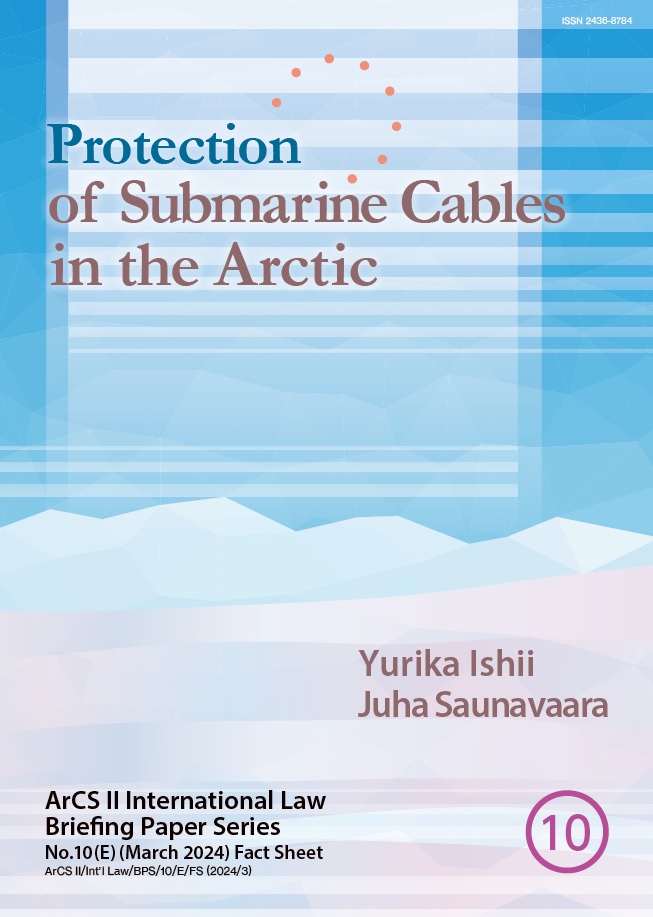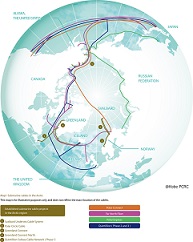How to protect submarine cables in the Arctic: Fact Sheet from ArCS II International Law Program explains

In October 2023, it was reported that submarine telecommunication cable connecting Finland and Estonia under the Baltic Sea, along with a gas pipeline, had been damaged in what may have been a deliberate act. Although there have been several accidents and incidents of damage caused by a variety of know and unknow reasons in the past, the issue of how to protect vulnerable submarine cables, including against deliberate sabotage, has attracted high attention recently. In the Fact Sheet (in English) published as Volume 10 of Briefing Paper Series (BPS) under ArCS II International Law Research Program, two experts describe concisely the current situation and plans regarding the pan-Arctic submarine cables development and the legal frameworks protecting such important infrastructure.
In the Arctic region, submarine cables play a crucial role in meeting the diverse needs of local communities, facilitating interregional connectivity, and serving Arctic societies. Although the advancement of cable networks has faced various challenges such as insufficient infrastructure for construction and maintenance, harsh weather conditions, operational challenges for cable-laying ships, and economic feasibility concerns, several submarine cables are operational and four transarctic cable projects are under development. However, the existing international and national laws, including the United Nations Convention on the Law of the Sea, do not adequately address the security of submarine cables.

Written by two experts, one from ArCS II International Law Program and one from ArCS II International Relations Program, this Fact Sheet describes challenges facing submarine cables in the Arctic, the ongoing transarctic submarine cable projects, and the domestic legislation and policies of the coastal states regarding those cables, as well as the lack of international cooperation and security concerns in recent years. For cables on the continental shelves, national laws regulate the laying and maintenance of cables, as well as penalties for their disturbances. However, those laws do not proactively protect submarine cables in their territorial waters or address security issues arising from deliberate infrastructure sabotage.
Submarine cable projects developed in the Arctic region also reflect the geopolitical reality that states need to secure infrastructure against potential threats. The international cooperation in the Arctic has faced challenges since Russia annexed Crimea in 2014 and its full invasion of Ukraine in 2022. This Fact Sheet, while indicating the limitations the Arctic Council has as a forum to address this issue, describes recent responses, such as the Coordination Cell for Critical Subsea Infrastructure established by the North Atlantic Treaty Organisation (NATO) and a Memorandum of Cooperation between Japan and EU signed in July 2023, a good example of supporting secure and resilient submarine cable connectivity.
Author:
Yurika ISHII
is an associate professor at National Defense Academy of Japan. She is specialized in law of the sea and public international law. She is a member of ArCS II Research Program on International Law (2020-2025).
Juha SAUNAVAARA
is an associate professor at Hokkaido University Arctic Research Center. He has published widely about the Arctic digital infrastructure. He is a member of ArCS II Research Program on International Relations (2020-2025).
<Relevant Information>
■ ArCS II International Law Research Program Briefing Paper Series
< https://www.research.kobe-u.ac.jp/gsics-pcrc/arctic/press_release/briefing_papers.html>